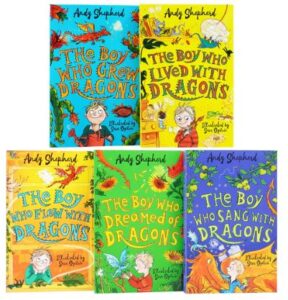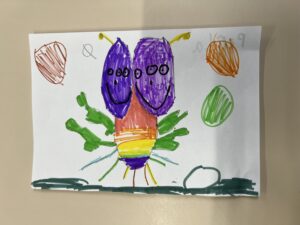Maths – money, money, money!
In Year 2 Maths we are currently learning about money. We are able to recognise coins and notes, and differentiate between pounds and pence, but we are still working on this! We have also been learning to make amounts of money by choosing the correct pounds, pence and notes.
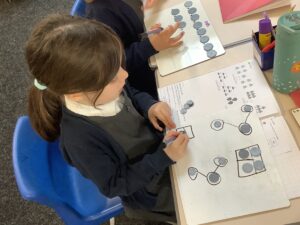
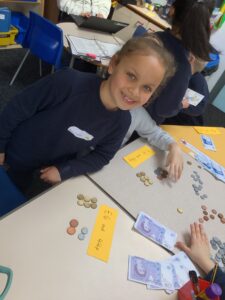
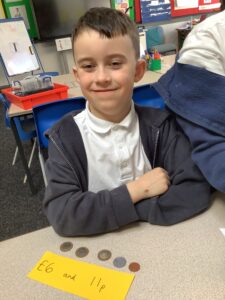
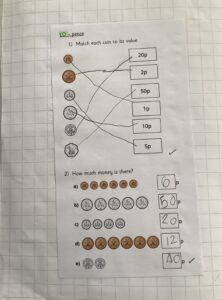

We have used our knowledge of addition and multiplication to perform calculations about money. Next week we will use our knowledge of partitioning, grouping and subtraction to help us with our next block of learning.
Help at home – by showing your child coins and notes and discussing their value. You can also use the money and practice addition.
Writing – all things Dragons!
This half-term our class novel is ‘The Boy Who Grew Dragons’ by author, Andy Shepherd. We are really enjoying reading the book and discovering the mischief that the dragon in the story causes for the main character, Tomas.
Last week in Y2, we drew our own dragons and wrote some adjectives to describe our dragons. We then put the adjectives into some expanded noun phrases.
We have also been learning about possessive apostrophes. We know that these types of apostrophes are used to show belonging/ possession.
See some of our fantastic work below!
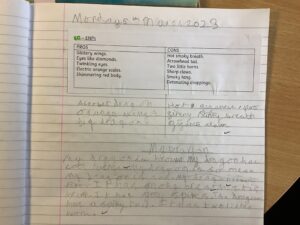
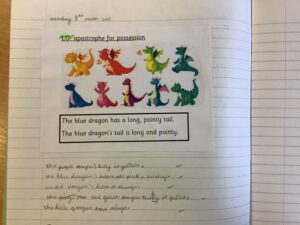

Help at home – by encouraging your child to use adjectives to describe things around the home or characters in books you are reading.
Science – working scientifically
This half term our science topic is working scientifically.
During this topic, we will be comparing different roads types and conducting investigations to find out what the best road surface is.
The scientist we will be finding out about is John McAdam. He invented a new way to build roads so that they were smooth, hard and allowed rain to drain away.

Would you have a dragon as a pet? (English – new class novel)
We always have a ‘class novel’ that we read at story time and use to enhance our writing and reading lessons. They have mostly been picture books so far. This term, we are reading a short chapter book – The Boy Who Grew Dragons by Andy Shepherd.
All the classes are reading this book and we are loving it so far! Who wouldn’t want a dragon as a pet?
Help at home by asking what has happened in the book so far. You could borrow a copy from your local library (or buy one if you’d like) to read alongside at home (don’t tell us the ending too soon though). You could also find other books to read by the same author.
KS1 – Topic
This half term KS1 are studying Computing in Topic. Last week, we discussed what a computer is and what sort of devices we might have at home that have a computer built-in.
This week, we have been looking at algorithms. We have been learning all about the program ‘Scratch Jr’ and how to create an algorithm. We know how to set a sequence so that our Sprites (characters) move, shrink, grow and turn.
We also learnt how to debug an algorithm that does not work and how to alter a sequence.
We’ve had a lot of fun using Scratch and learning about all of the buttons and how they work. We are really looking forward to using the program again next week and learning more!


World Book Day
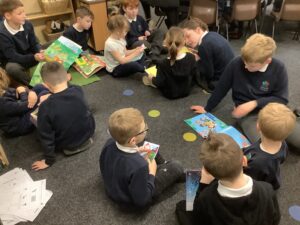



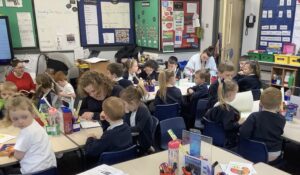
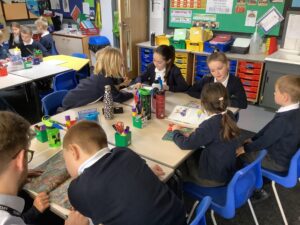
One of the ways we have celebrated World Book Day is by shared reading. The year 5/6 children visited KS1 this morning to read our favourite books to us. The children enjoyed being read to and sharing why they liked their books.
The adults have also been sharing their favouirte books with the children.
Reading with automaticity and fluency : Poem of the week
We really enjoyed our Poem of the week last week. After reading it every day, we become fluent and read with more and more automaticity. This makes the children feel like ‘real readers’. It also inspired us to draw our own aliens.
Help at home by encouraging your child to read the poem of the week to you when they bring home a copy of it on Fridays.
World Book Day 2023 (but we’re doing all week!)
We enjoyed a brilliant video chat with Julia Donaldson and Axel Scheffler today. They read stories to us and Axel showed us how he does his illustrations. You can enjoy their new book, The Baddies, here. (This is a YouTube link. Top tip for watching YouTube with your child: go to the settings cog along the play bar and turn off autoplay – this avoids an inappropriate clip coming up automatically, and helps to discourage your child from passively watching clip after clip.)
Maths – dividing by 2
Our current Maths focus in Year 2 is multiplication and division. This week in 2C, we have been practising dividing by 2 by using sharing and grouping methods.
‘We know that dividing by two also means halving.’
Today, we worked in small groups to divide even numbers equally into two groups.
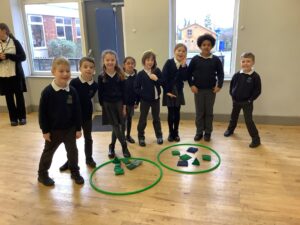
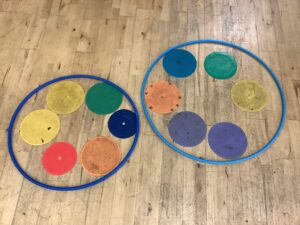

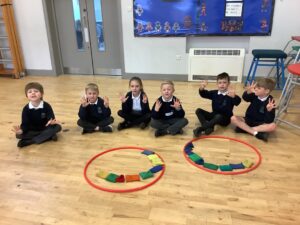
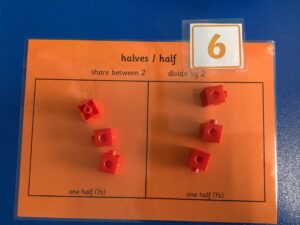


Help at home by collecting objects in the house such as fruit, coins or beads and dividing them equally into 2 groups. Make sure that you collect an equal number of objects! Challenge your child by asking them to explain why you have chosen an even number to divide into 2!
Geography topic and thanks to Scholes in Bloom
We really enjoyed our Geography topic last half term. We discovered an issue with pollution (litter) in our school grounds after doing a survey. So, we decided to sort it out! We made posters to remind ourselves to recycle and bin our rubbish and also did a litter pick with pickers borrowed from Scholes in Bloom.
